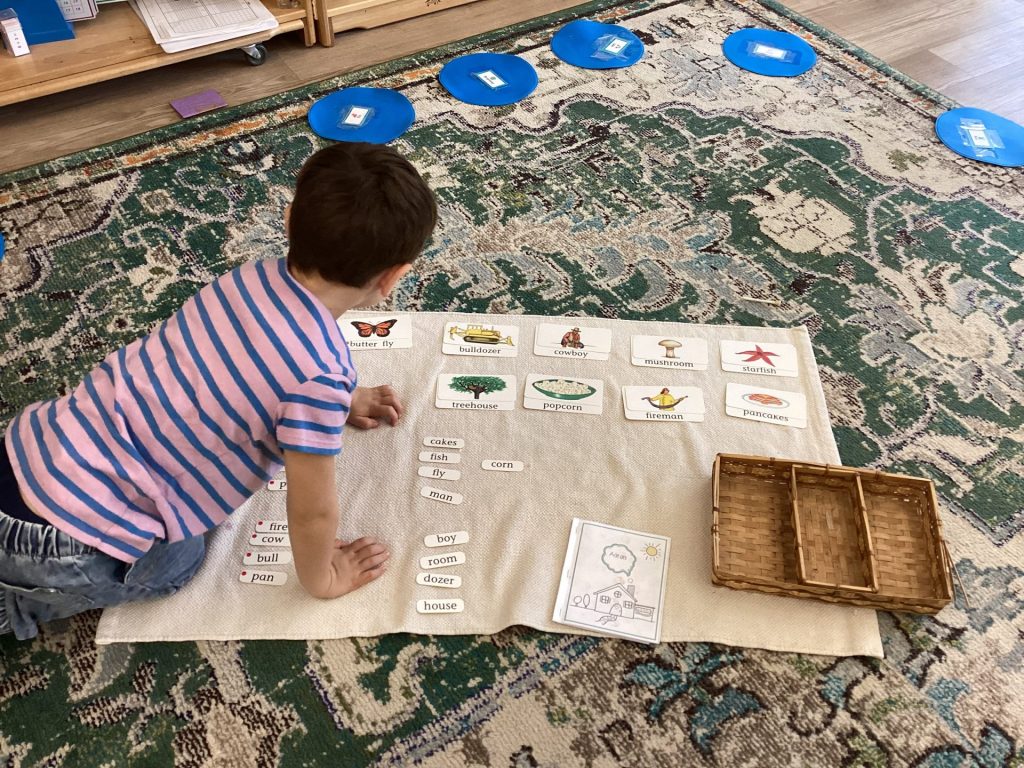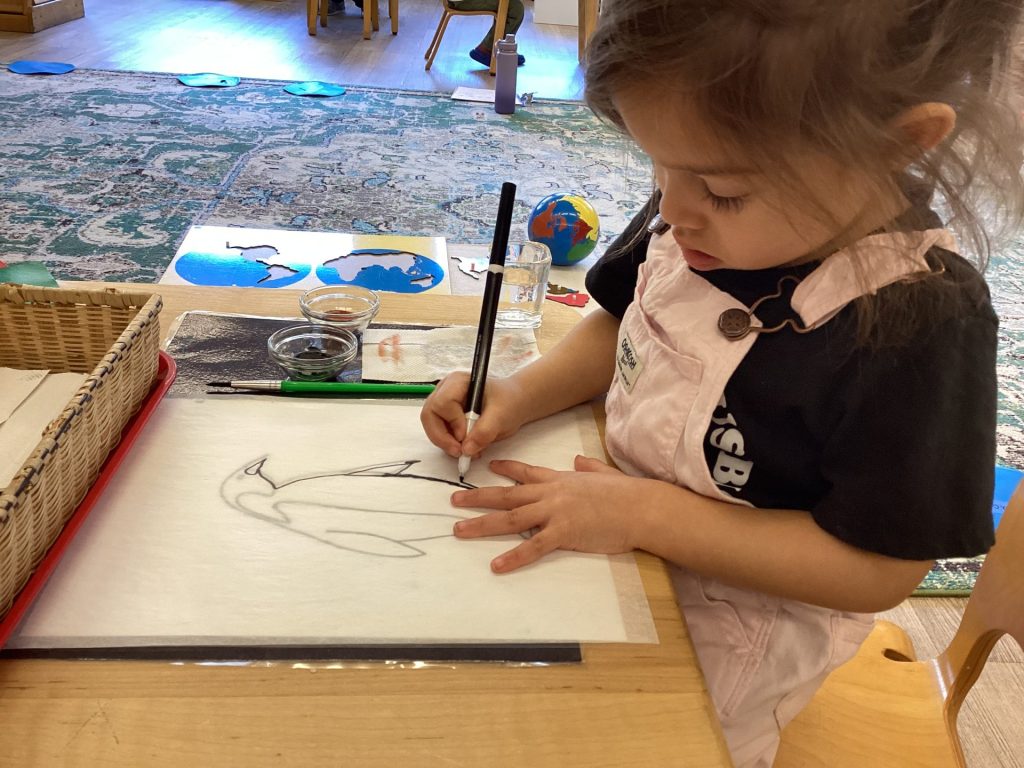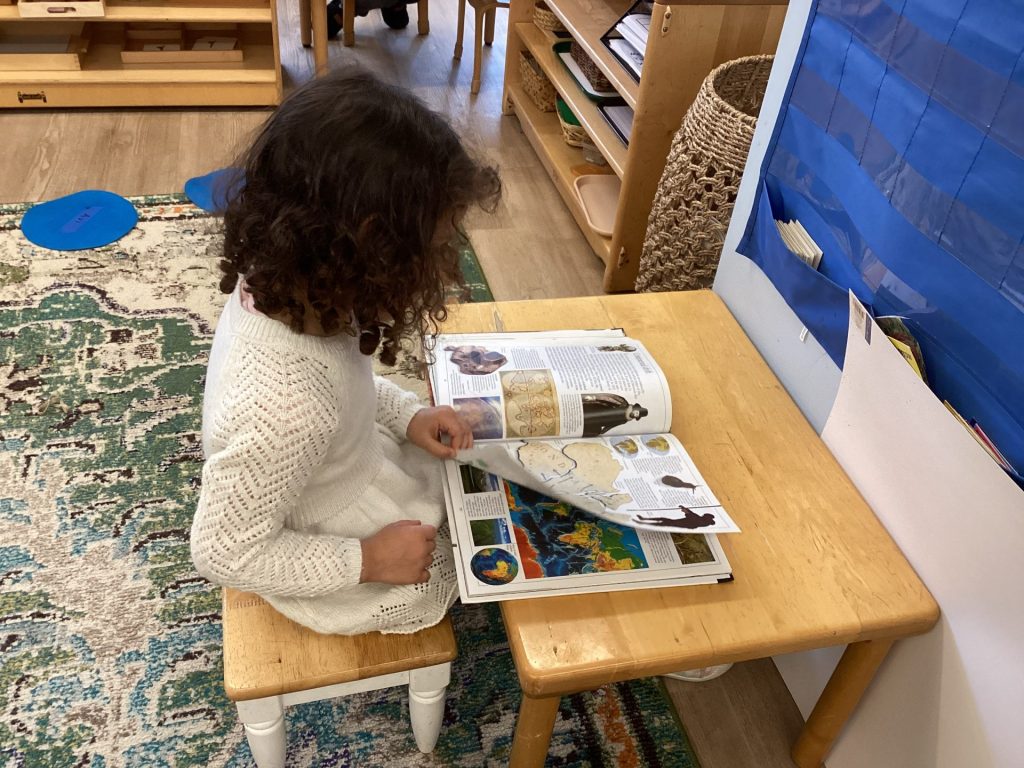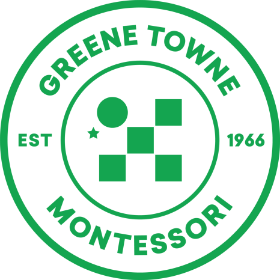Birch Tree January- Reading Development
One of the many questions and worries a parent can have is, when will my child be reading? This is a journey that can look unique to each child. Contrary to some beliefs that it will just happen naturally, it does need to be explicitly taught. Luckily, the Montessori method is rooted in some of […]
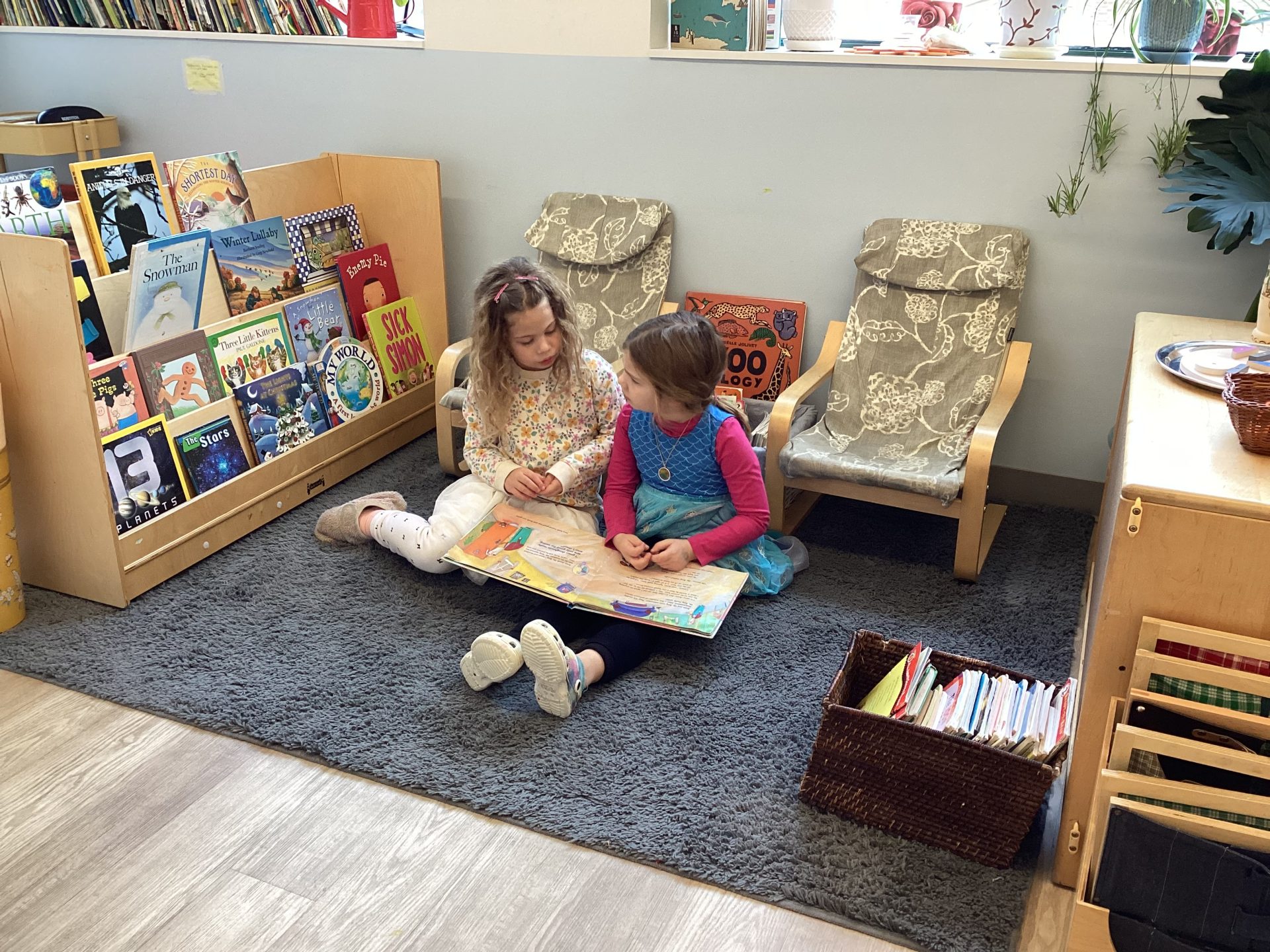
One of the many questions and worries a parent can have is, when will my child be reading? This is a journey that can look unique to each child. Contrary to some beliefs that it will just happen naturally, it does need to be explicitly taught. Luckily, the Montessori method is rooted in some of the best practices for setting the foundation for a successful journey into reading.
It all starts with auditory and oral language. This is how we learn to speak, by hearing the sounds of words before we can make sense of any symbols associated with them. This practice is reinforced in the toddler years and continues into their time in Primary. Rich vocabulary is used, stories are told, books are read aloud, and awareness is brought to the many sounds heard in words when you break them apart. Sound games are a fun and common tool to use in creating awareness of language. For example, deciphering the letter sound at the beginning of words with a game of I spy. “I spy with my little eye, something that begins with mmmm”. There may be several objects or pictures in front of the child to choose from. “Yes, the mouse!” Rhyming games, asking questions to determine comprehension, and even slowing down and enunciating certain letters in your own speech are great ways to contribute to this stage.
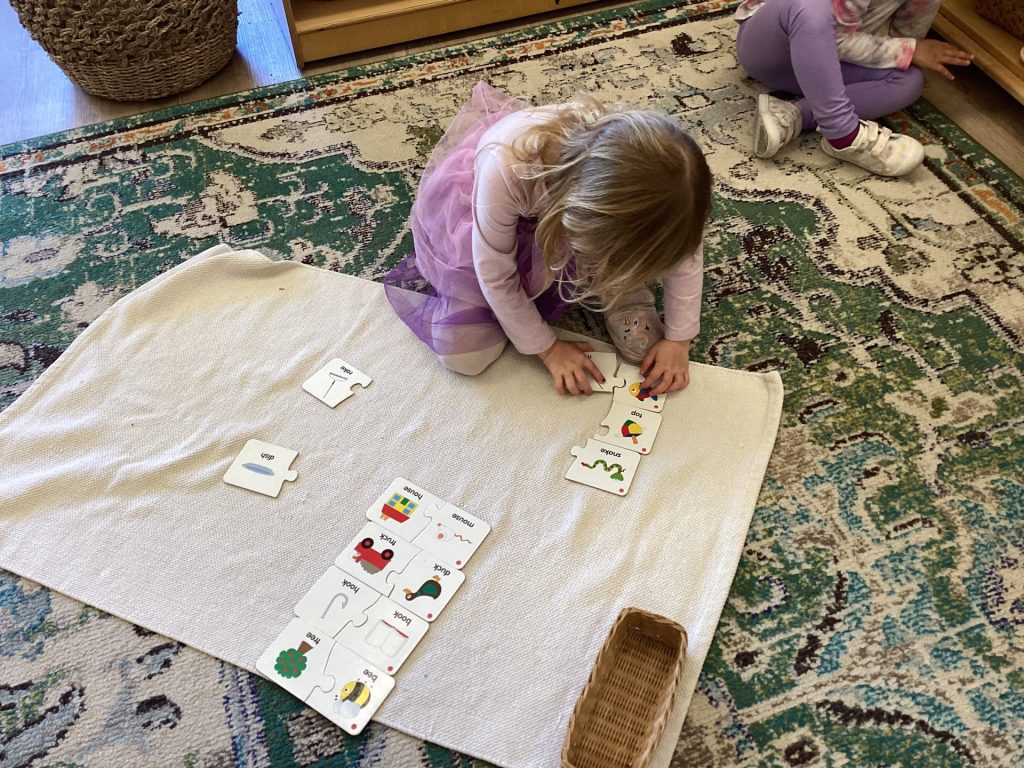
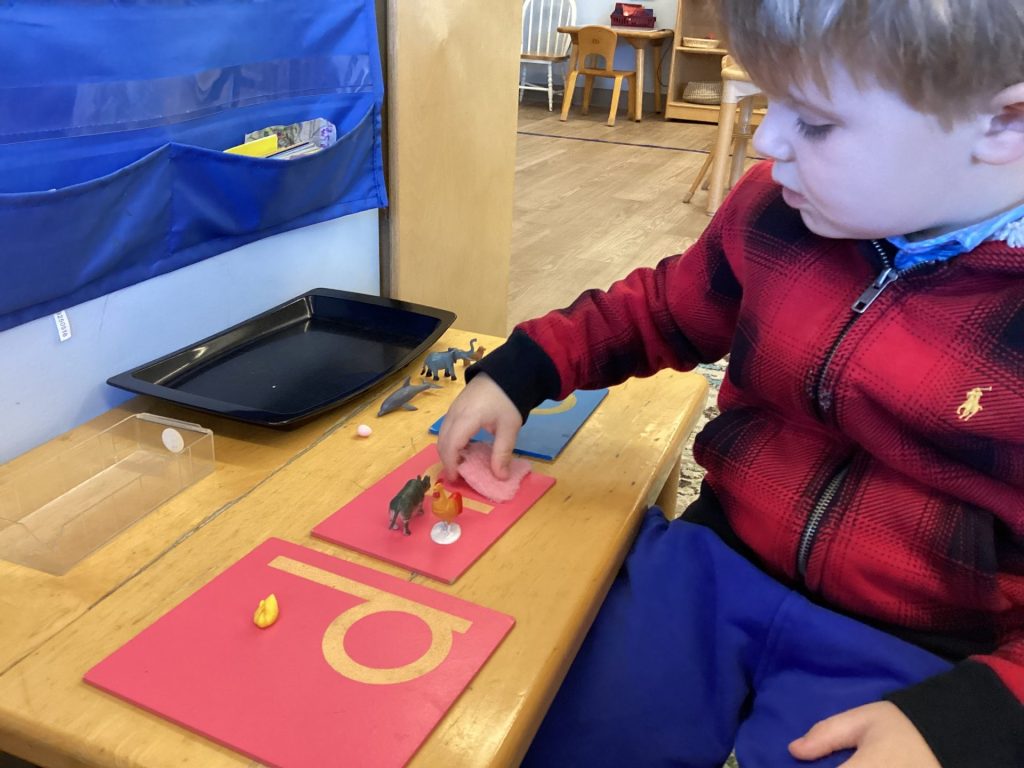
One important component of this method is using the sound that the letter makes and not the letter name. This directly supports the child when it comes to reading later because they can begin early on to put sounds together to make words. The names of the letters come naturally later once they have made these connections. This phase of connecting letter sounds to their symbols can take time but it is one of the most important stages. Imagine learning a new language that does not have our familiar alphabet!

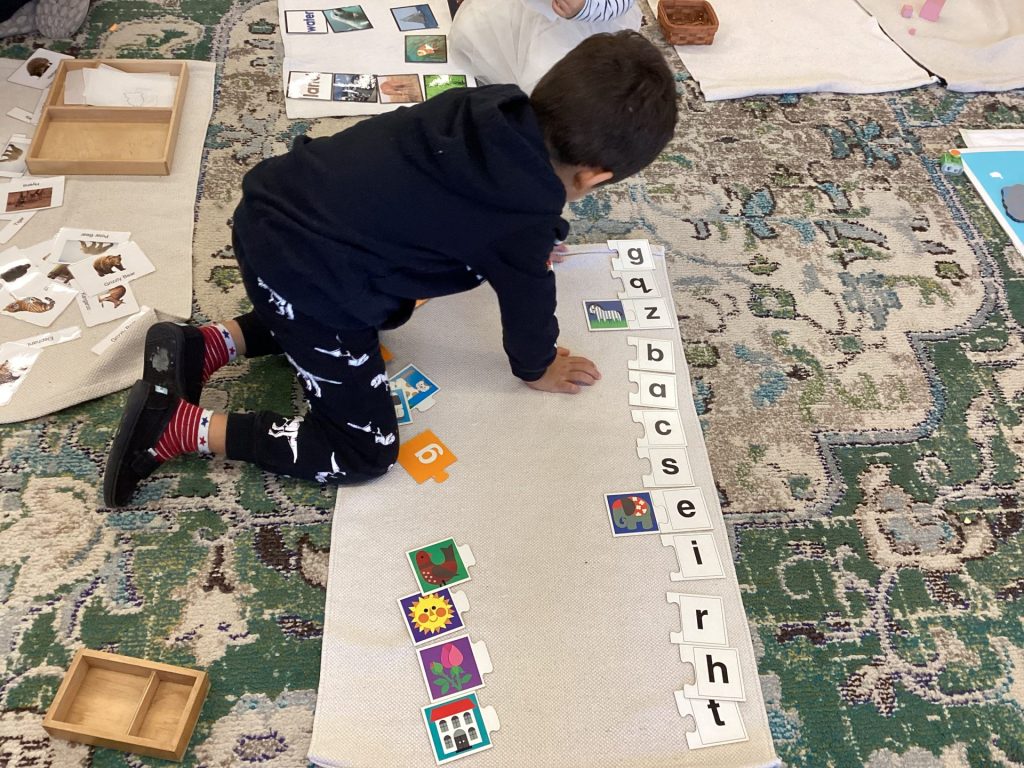
Once a child knows several letters confidently, we can begin to move on to “writing” or spelling out some simple phonetic words. A child that knows the letters m, s, t, a, c, e, r, can put together words like mat, cat, sat, red, rat, etc. We use what is known as the moveable alphabet to make cvc words (consonant, vowel, consonant). Even here, a child may not yet know what they are spelling because they are isolating each letter sound. This process is called encoding – or the hearing and writing of sounds. The skill of blending the sounds together to make a word mean something becomes the progression. Using objects and pictures also supports this process.
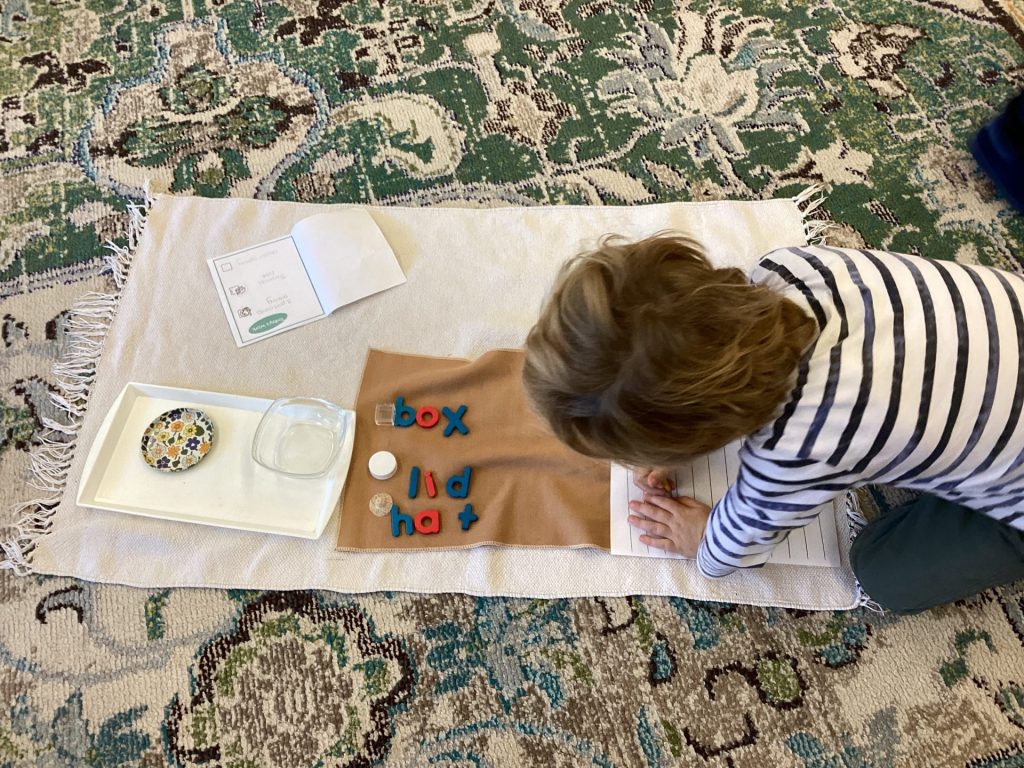
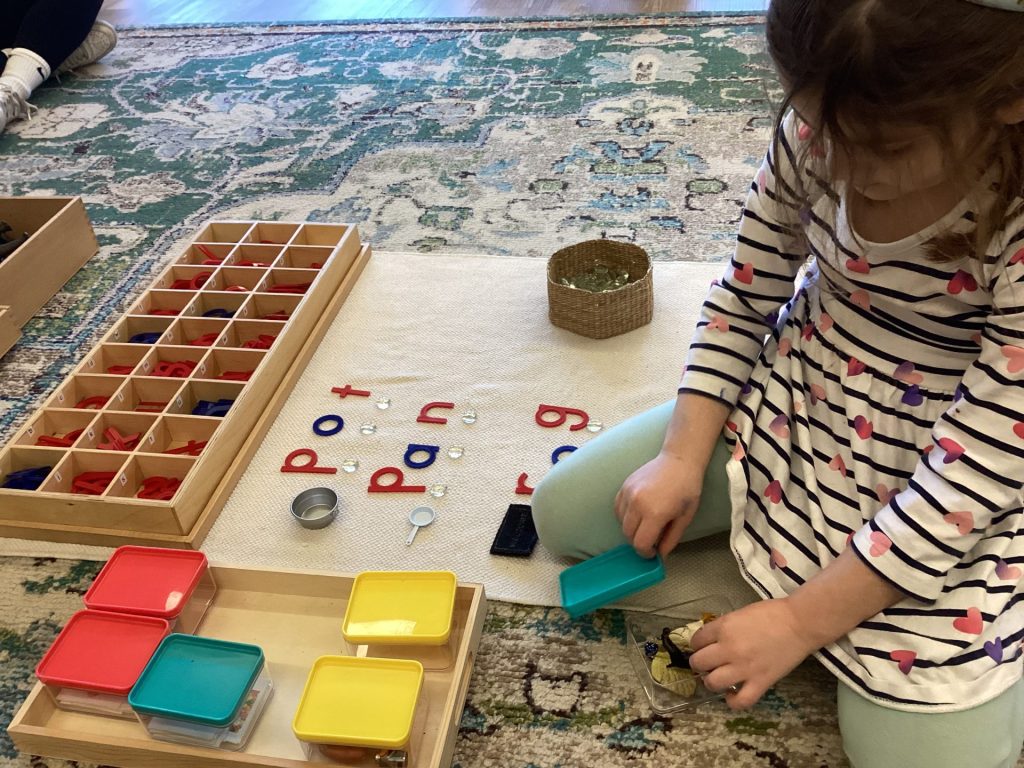
As a child practices, repeats, and masters, other blends get introduced that have additional vowels and consonants but can still be phonetically sounded out like “star, flag, belt…”. Common sight words come into play like “a, the, is, on”. Eventually, the child will be able to put simple sentences together with beginner readers like, “The cat is on the mat.”. This starts the process of decoding or understanding what is written when it is read. Special sounds (phonograms) like, “sh, th, ch…” have their place too and are used in the same way with the moveable alphabet. The use of objects and pictures are still needed and useful as children practice hearing and seeing words with these sounds in them. Other more complex sounds like “ai, ea, oo, silent e, long and short vowels, etc. ” begin to be introduced as a child is progressing. It continues to develop the breadth and ability of their reading as they see new words with these sounds and make the associations.
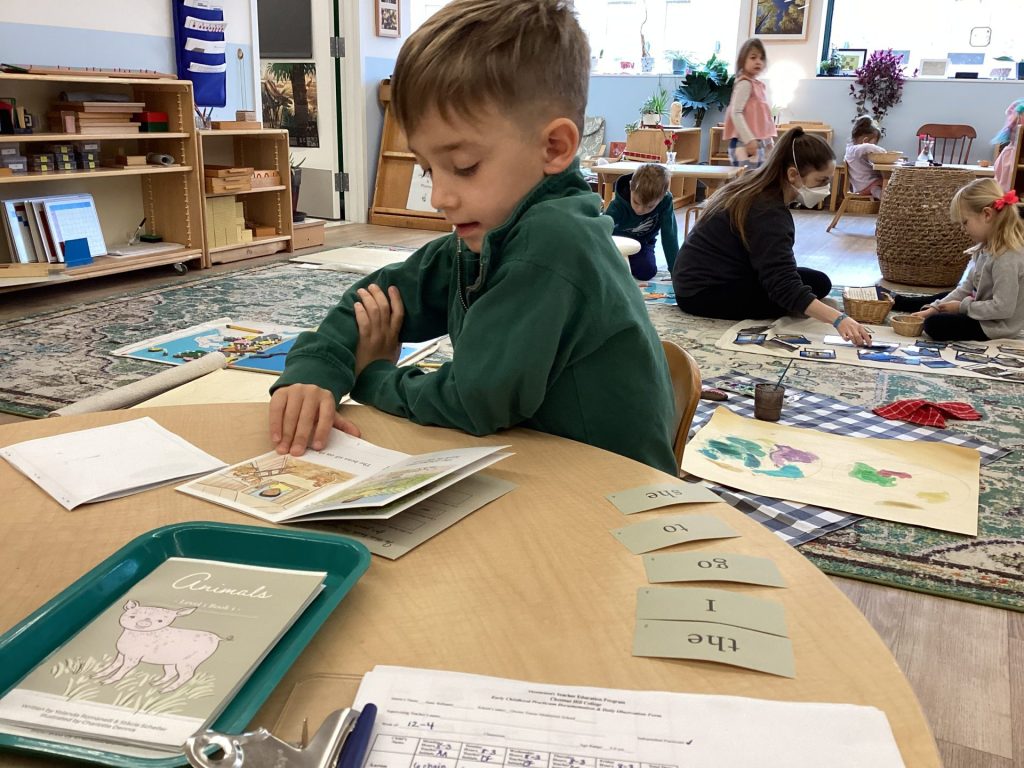

Many other materials and tools are used throughout this process and in between on the language shelves in a Montessori classroom. Additionally, things like syllables, compound words, lots of other sight words, parts of speech, journals, letter formation, and an ample supply of early readers are provided and taught through individual or small group lessons. This is a small snapshot of what reading development looks like in our classroom. Throughout a child’s journey through a Primary classroom, some children will be just beginning reading simple sentences and short books confidently, some may need more time in differentiating letters and sounds, while others may leave reading full on chapter books. While it is each child’s individual learning journey to reading, they will all walk away with a solid foundation in language that will support and serve them for life.
